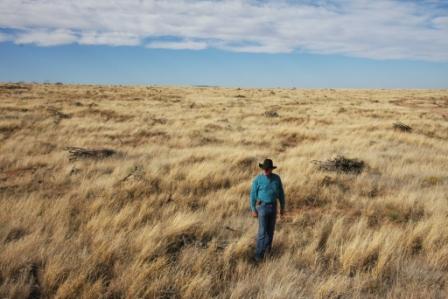Regeneration / a talk by Courtney White
I have worked on the front lines of collaborative conservation, regenerative agriculture, and ecological restoration for two decades, sharing innovative, on-the-ground solutions that bring people together in what we call the radical center. These solutions include progressive cattle management, land health, local food production, and atmospheric carbon sequestration in soils. I have advocated for these hopeful solutions both in my writing and nonprofit work.
In my lifetime, human impact on the planet has gone from small to catastrophic, raising an anguished question: What Is Earth For? The presentation covers my unique journey through conservation and regenerative agriculture and is designed to provoke thoughtful questions about the future. At each step, I found a great deal of hope to a variety of global concerns – hope that I’d like to share.
The following information is also available HERE as a PDF for more information.
(1) Regenerative Agriculture
No-till, cover crops, polycultures, and animal agriculture in harmony with nature – practical and profitable. If we could do one thing for the planet it would be to stop tilling the land.
The Drawdown Project ranks regenerative agriculture as #6 on its list of most effective strategies to combat global warming and describes its purpose as to “continually improve and regenerate the health of the soil by restoring its carbon content, which in turn improves plant health, nutrition, and productivity.”
(2) Soil Carbon Sequestration
Any biologically-based practice that draws down atmospheric carbon and stores it safely and long-term in the soil will create multiple, cascading benefits for all life on earth.
Photosynthesis is a miracle. It transforms atmospheric carbon dioxide (CO2) into carbon (C) and oxygen. Much of the carbon can be sequestered in the soil beneath the plant where it becomes a key component in the microbial universe underground. If managed properly, it can stay safely stored for a long period of time.
(3) Ecological Restoration
Much of the natural world, and nearly all agricultural land, has been damaged by hard and ignorant use and needs to be restored to ecological health.
Once controversial, restoration today is widely accepted and implemented. Thanks to the hard work of many people and organizations we know how to restore land to health using nature-based methods that are effective and low-cost, especially in riparian zones. The key is to “think like a creek” to quote Bill Zeedyk, a pioneering riparian restoration specialist that I had to the honor to work with for many years.
(4) Act Local
Watersheds, Foodsheds, and Fibersheds – inspiring and effective models of local, regenerative, and collaborative use of natural resources exist in many places.
‘Think Global, Act Local’ is an old phrase but its wisdom has only grown over time. The simplest way for any citizen to pitch in to help fight climate change is to participate in local food, fiber, and watershed endeavors. Each can lower the carbon footprint of the product immensely. A good example are fibersheds, which source clothing from a defined radius (often less than 300 miles).
(5) Work in the Radical Center
The radical center is where we come together to explore what we have in common rather than argue our differences.
Rancher Bill McDonald coined the term in the mid-1990s to describe an emerging consensus-based approach to land management challenges in the American West. It was ‘radical’ because it challenged orthodoxies, including the belief that conservation and ranching were part of a ‘zero sum’ game – that one could only advance if the other retreated. The ‘center’ refers to a pragmatic middle-ground of partnerships, respect, and trust – and action.
CONTACT me if you are interested in having me speak to your group.
“Hope in a book about the environmental challenges we face in the 21st century is an audacious thing to promise, so I’m pleased to report that Courtney White delivers on it.” – Michael Pollan, in his Foreword to my book Grass, Soil, Hope.





